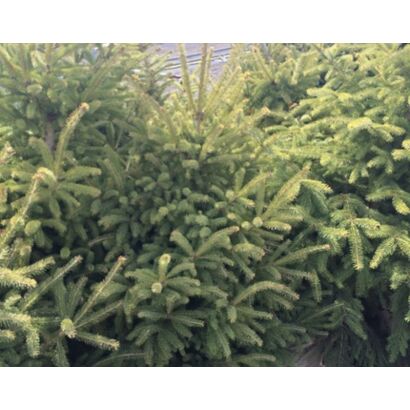Canadian spruce
Crown: regular conical, symmetrical
Pine needles: dove-green
Frost resistance: high
Regions: all regions
Origin: Canada
Canadian spruce (Picea glauca) – a bright representative of coniferous plants, in many respects similar to the Siberian variety, but only with gray needles. The variety was first discovered by Canadian dendrologists near Lake Liggan. Spruce was taken out of the homeland at the beginning of the 18th century. The first notes about its appearance in Russia appeared in the documents of the Botanical Garden of the Russian Academy of Sciences dated 1816.
Variety advantages: decorative appearance, frost resistance, shade tolerance, slow growth, lack of regular pruning.
Appearance
Treetall. At home, in the wild, spruce grows up to 30-40 m. In landscape design, its undersized counterparts are used. At the same time, the plant gains height slowly. In the first six years, the seasonal growth is about 6 cm. Between 6 and 15 years – the tree grows to 4 m. Further growth slows down again.
Crown – clearly defined, regular conical shape, symmetrical. In young spruce branches grow upwards, in older ones – descend to the ground. Cones are formed from the 10th year of life.
The average lifespan of cultivated trees – about 60 years old, wild – 300 years or more.
Needles of Canadian spruce are lush, rich green with a bluish bloom. This distinctive feature gives the landings a unique bluish haze. Needles short – up to 1 cm in length, grow on shoots. At a young age, the needles are soft, pale green in color, thicken with age, darken and become prickly.
Destination. For the ideal shape of the crown and the unique coloring of the needles, giving room for creativity, landscape designers love Canadian spruce. Most often, hedges are created from it, including for protection from the wind.
Immunity. The Canadian spruce variety is rarely affected by diseases and pests. Often the plant is attacked only by a spider mite. To detect an insect, place a white sheet of paper under the spruce paw and shake it a little. If an insect has fallen on a leaf, you will need to treat the conifer with insecticides.
Growing conditions.
Canadian spruce – thrives in maritime and continental climates. Due to its high frost resistance, it is suitable for cultivation in northern regions.
Spruce does not burn in the sun, but in general it does not tolerate drought well. With a long absence of rain, the trees need watering.
Canadian varieties are also less responsive to air pollution and smoke than European varieties, so they are more often used to improve the urban environment.
Beware of fakes and contaminated planting material, purchase Canadian spruce seedlings from specialized nurseries.
